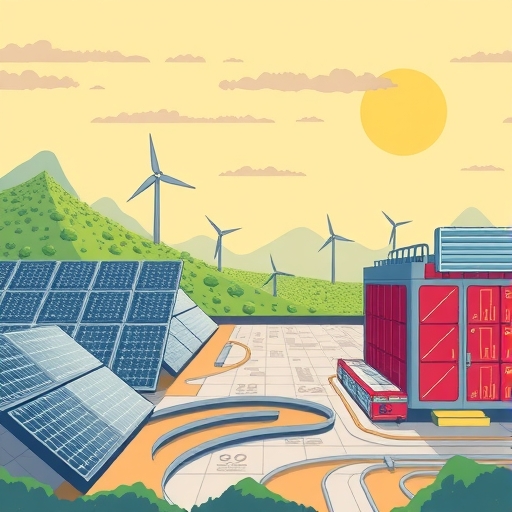Navigating the Future of Energy: A Deep Dive into Bloom Energy Stock (BE)
Welcome, aspiring investors and seasoned traders alike, to our exploration of a fascinating player in the evolving energy landscape: Bloom Energy Corporation (BE). As the world grapples with increasing power demands and the urgent need for cleaner, more reliable energy sources, companies like Bloom Energy find themselves at the forefront of innovation. But what does this mean for the stock, for your potential investment journey? Together, we will unpack Bloom Energy’s business, its financial health, the market forces shaping its future, and what analysts and investors are saying, helping you build a clearer picture.
Investing, at its core, is about understanding the story behind the ticker symbol. It’s not just about price charts; it’s about the technology, the market opportunity, the financial reality, and the management’s ability to execute. Our goal here is to arm you with the knowledge to understand the complexities of BE stock, enabling you to make informed decisions that align with your own investment strategy and risk tolerance.

In the evolving energy landscape, innovations such as solar panel technology play a significant role. Here are three key trends shaping the future of energy:
- Increased reliance on renewable energy sources.
- Technological advancements in energy storage and fuel cells.
- Growing demand for decentralized energy solutions.
Understanding Bloom Energy: The Company and Its Groundbreaking Technology
So, who is Bloom Energy Corporation? Headquartered in San Jose, California, Bloom Energy operates within the Electrical Equipment & Parts industry, a segment of the broader Industrials sector. But they are far from a traditional electrical equipment manufacturer. Their core focus is on designing, manufacturing, selling, and installing cutting-edge solid-oxide fuel cell systems. Think of these systems not as generators that burn fuel, but rather as electrochemical devices that convert fuel into electricity through a clean, quiet process.
Their flagship product, the Bloom Energy Server, is designed for on-site power generation. This means electricity is produced right where it’s needed, reducing reliance on the traditional, often strained, centralized grid. What makes their technology particularly versatile and relevant for the future is its ability to utilize a variety of fuels. While historically operating on natural gas, the technology can also run on biogas (derived from organic waste, making it renewable) and, critically, hydrogen. This fuel flexibility positions Bloom Energy strategically in a world looking towards diverse and cleaner energy pathways.
Unlike combustion engines, fuel cells produce electricity with significantly fewer pollutants, including dramatically lower carbon emissions (potentially zero when using biogas or green hydrogen). This aligns perfectly with global decarbonization efforts. Understanding this fundamental technology – its electrochemical process and multi-fuel capability – is essential to grasping Bloom Energy’s unique value proposition in the energy sector.

Bloom Energy’s Business Model: On-Site Power Solutions for a Demanding World
Why is on-site power generation becoming increasingly important? Imagine a critical facility – perhaps a data center that must operate 24/7, or a hospital that cannot afford even a momentary power interruption, or a manufacturing plant requiring a stable, high-quality power supply. Relying solely on the centralized utility grid, which can be susceptible to outages from severe weather, equipment failures, or increased demand, introduces significant risk. This is where Bloom Energy’s business model shines.
By providing on-site power through their Bloom Energy Server systems, they offer customers enhanced energy resilience, reliability, and often, improved power quality. The customer essentially has their own power plant on their premises. This model appeals to a diverse range of industries globally, as highlighted in the data provided: utilities, data centers, agriculture, retail, hospitals, higher education, biotech, and manufacturing. Each of these sectors has unique power needs and vulnerabilities that on-site generation can address.
Furthermore, the modular nature of fuel cell systems allows for scalability. As a facility’s power needs grow, additional Bloom Energy Servers can be added. This offers a flexibility that traditional grid upgrades often lack in terms of speed and cost. This focus on distributed, reliable, and cleaner power generation is at the heart of Bloom Energy’s strategy and its relevance in today’s energy market.
| Industry Sector | Power Needs |
|---|---|
| Data Centers | 24/7 Operation |
| Hospitals | Uninterrupted Power |
| Manufacturing | Stable Supply |
Decoding Bloom Energy Stock (BE): Key Performance Metrics for Investors
Now, let’s turn our attention to the stock itself. Bloom Energy Stock trades under the ticker symbol BE on major U.S. exchanges like the NYSE and Nasdaq. Like any publicly traded company, its stock performance is influenced by a myriad of factors, including company performance, sector trends, macroeconomic conditions, and investor sentiment.
Looking at the provided data from sources like Yahoo Finance and Google Finance, we see various metrics. The Previous Close, Open, and Day’s Range give us a snapshot of recent trading activity. More telling are the longer-term ranges, such as the 52 Week Range. The data shows figures like ~$8.41 to $18.76 (Yahoo Finance) or even ~$8.41 to $29.83 (Google Finance), indicating significant price fluctuations over a year. This wide range points to one of the key characteristics of BE stock: volatility.
This volatility is further underscored by the company’s Beta. Beta measures a stock’s sensitivity to overall market movements. A Beta of 1 means the stock is expected to move in line with the market (like the S&P 500). Bloom Energy’s Beta is notably higher, around 2.80 to 3.06 according to the data. What does this mean for you as an investor? A Beta of 3 suggests that, theoretically, BE stock could move three times as much as the market in either direction. If the market goes up 1%, BE might go up 3%; but if the market drops 1%, BE might drop 3%. It’s like riding a rollercoaster compared to a gentle train ride – potentially higher highs, but also steeper drops. Understanding this inherent volatility is crucial when considering BE for your portfolio, especially for beginner investors.
The Market Cap, or market capitalization, tells us the total market value of the company’s outstanding shares. The provided data shows differing figures (~$2.69B vs. ~$5.65B), likely due to different calculation times or data sources. Regardless of the exact number at any given moment, it places Bloom Energy within a range that some might consider a mid-cap company (though classifications vary). Market cap gives us a sense of the company’s size relative to others in the industry and the broader market.
| Metric | Value |
|---|---|
| Beta | 2.80 – 3.06 |
| Market Cap | $2.69B – $5.65B |
| 52 Week Range | $8.41 – $29.83 |
When examining stock performance over different periods (1D, 6M, YTD, 1Y, 5Y), the data from Yahoo Finance US showed significant negative returns over many of these timeframes as of the snapshot date (Jul 3, 2024). However, other data (Google Finance, Feb 14, 2025) showed positive YTD performance relative to the S&P 500. This highlights the importance of looking at multiple data sources and understanding the “as of” date. Regardless of the specific short-term trend, the multi-year performance often reflects the challenges companies in innovative, capital-intensive sectors face on the path to profitability.
A Deep Dive into Bloom Energy’s Financial Landscape
Moving beyond stock metrics, a critical part of evaluating any company is understanding its financials. The provided data offers a glimpse into Bloom Energy’s financial health through key line items from their income statements and balance sheets, often on a trailing twelve-month (ttm) or quarterly basis (e.g., Q3 2024, Sep 2024 Quarter).
Let’s look at Revenue. The data shows figures like $1.26B (ttm) or $330.40M (Q3 2024). While the Q3 2024 revenue showed a year-over-year *decrease* of 17.46%, it’s important to look at trends over several periods and listen to the company’s earnings calls for context (e.g., Q1 2025 revenue might have shown growth as mentioned in one data point, though specific figures weren’t provided). Consistent revenue growth is typically a sign of a healthy, expanding business, but fluctuations can occur due to large project cycles or market conditions.
Perhaps the most challenging aspect of Bloom Energy’s current financial picture, as highlighted by the data, is its profitability. The PE Ratio (TTM) is listed as “–” or not available, and the EPS (TTM) is negative (e.g., -$1.32, -$0.52, or even a significantly improved -$0.01 in Q3 2024). A negative EPS means the company is currently losing money on a per-share basis. This is common for growth companies in nascent or developing industries that require significant investment in R&D, manufacturing capacity, and market development before reaching scale and efficiency.
| Financial Metric | Q3 2024 |
|---|---|
| Revenue | $330.40M |
| Net Income | -$14.71M |
| PE Ratio | N/A |
The Net Income figures also reflect this. A negative Net Income means the company’s expenses exceeded its revenues during the period. While the data noted a significant 91.30% Y/Y improvement in the *loss* in Q3 2024 (-$14.71M), the company is still not profitable overall. This is a key risk factor that investors must consider. When will Bloom Energy turn a profit, and what is the path to get there? Management’s plans for cost reduction and scaling production are crucial pieces of this puzzle.
Looking at the balance sheet, the Total Debt/Equity ratio stands out at a high 372.92% (mrq – most recent quarter). This ratio compares a company’s total liabilities to its shareholder equity. A high ratio indicates that the company is significantly leveraged, meaning it relies heavily on borrowing to finance its operations and growth. Think of it like taking out a large mortgage relative to the down payment on a house. While debt can fuel growth, high debt levels increase financial risk, particularly if the company struggles to generate enough cash flow to service its debt obligations. This level of leverage is a significant point of scrutiny for potential investors.
Finally, let’s consider Cash Flow. The Levered Free Cash Flow (ttm) was negative (-$304.42M), and the Free Cash Flow (Q3 2024) was also negative (-$90.81M), though the Q3 figure showed a 65.31% Y/Y improvement in the negative flow. Negative free cash flow means the company is spending more cash on operations and capital expenditures than it is bringing in. This is typical for growth companies investing heavily, but unsustainable in the long run without access to external funding (like issuing new stock or taking on more debt). Combined with high debt, negative cash flow can create liquidity concerns if not managed effectively. Understanding these financial metrics provides a sober look at the company’s current state behind the exciting technology.
The AI Data Center Catalyst: Fueling Future Growth?
One of the most significant market trends explicitly linked to Bloom Energy’s potential growth in the provided data is the explosive demand for electricity from AI data centers. The artificial intelligence revolution requires immense computing power, and that computing power consumes vast amounts of energy. As companies build and expand data centers to meet this demand, they face a critical challenge: securing reliable, scalable power.
This is where Bloom Energy sees a substantial opportunity, and it’s a key part of the investment thesis cited by analysts and investors like the Columbia Seligman Global Technology Fund. Traditional data centers already require significant power, but AI workloads push these demands to unprecedented levels. These facilities need to be operational constantly, meaning power reliability is paramount. Furthermore, deploying new grid infrastructure to support these power-hungry sites can be slow, expensive, and complex, especially given existing grid constraints.
Bloom Energy’s on-site power generation offers a compelling solution. By installing fuel cell systems directly at or near the data center, they can provide dedicated, reliable power capacity that can be deployed more rapidly than waiting for utility upgrades. This circumvents some of the headaches associated with grid connection delays and limitations. The ability to scale the power output by adding more fuel cell modules also matches the modular growth needs of many data center operators.
This connection to the burgeoning AI industry is a major potential tailwind for Bloom Energy. It ties their core technology directly to a massive, high-growth sector with a clear and immediate need for their specific solution – reliable, on-site, scalable power. It’s a narrative that resonates strongly with technology-focused investors, framing Bloom Energy not just as an energy company, but as an enabler of the digital future.

Navigating Grid Constraints and the Need for Distributed Power
The challenge posed by AI data centers isn’t just about the sheer volume of electricity needed; it’s deeply intertwined with the limitations of our existing power grids. Many grids, particularly in developed regions, are aging infrastructure originally designed for different load profiles and less dynamic demand. Adding large, sudden loads like multi-megawatt data centers can strain local substations, transmission lines, and overall grid stability.
Utilities face significant hurdles in upgrading infrastructure quickly enough to keep pace with this accelerating demand. Permitting, construction, and equipment delivery timelines for major grid projects can stretch into years. This creates bottlenecks, delaying the activation of new data centers and other power-intensive facilities.
This is precisely where the concept of distributed power generation, like that offered by Bloom Energy, gains significant traction. Instead of drawing all power from a single, distant point on a potentially overloaded grid, distributed systems generate power closer to the point of consumption. This reduces the burden on transmission and distribution lines, enhances local grid stability, and provides energy independence for the end-user.
Think of the grid like a highway system. If everyone needs to use the same exit at rush hour, you get congestion and delays. Distributed power is like having alternative routes or even building a new, dedicated road directly to your destination. For critical facilities like data centers that require massive, uninterrupted power, bypassing the potentially congested “highway” of the traditional grid via on-site generation becomes a highly attractive, sometimes essential, option.
Bloom Energy’s technology, capable of being installed relatively quickly compared to large-scale power plants or grid expansions, directly addresses this pain point. It provides a pathway for companies to access the power they need without being entirely beholden to utility timelines or grid limitations. This market dynamic, driven by both increasing overall demand and specific grid infrastructure challenges, is a fundamental pillar supporting the argument for Bloom Energy’s long-term relevance.
Hydrogen, Carbon Capture, and the Broader Energy Transition
Beyond the immediate driver of AI data centers and grid constraints, Bloom Energy’s technology positions it within the much larger, long-term trend of the global energy transition. Their fuel cells’ ability to run on fuels like biogas and, critically, hydrogen, connects them directly to the decarbonization movement.
Hydrogen is increasingly viewed as a crucial energy carrier for a clean future, particularly for difficult-to-decarbonize sectors and as a means of storing intermittent renewable energy. Bloom Energy’s technology is adaptable to run on hydrogen, offering a path towards truly zero-carbon on-site power when combined with green hydrogen production. This capability expands their potential market beyond reliance on natural gas infrastructure, aligning them with national and international clean energy goals.
Furthermore, the data highlighted a partnership with Chart Industries for carbon capture. While Bloom’s fuel cells inherently produce lower emissions than combustion, capturing any remaining CO2 output further enhances the environmental profile of their solutions. This partnership demonstrates Bloom Energy’s commitment to evolving its offerings to meet increasingly stringent climate targets and market demands for cleaner energy.
These developments in hydrogen and carbon capture broaden Bloom Energy’s appeal and potential applications, extending its relevance beyond immediate on-site power needs to contributing to the wider clean energy ecosystem. For investors interested in the long-term shift towards sustainable energy, Bloom Energy’s positioning in these areas adds another layer to the investment thesis, though it’s important to remember that these are still developing markets and technologies.
What the Analysts and Investors Say About BE Stock
Understanding how professional analysts and large institutional investors view a stock can provide valuable context, although it should never be the sole basis for your decisions. The provided data gives us insights into how some market participants perceive Bloom Energy.
We learned that RBC Capital, a major investment bank, holds an Outperform rating on Bloom Energy stock with a price target of $26.00 (as per the snapshot date). What does an “Outperform” rating mean? It generally suggests that the analyst expects the stock to perform better than the average stock in their coverage universe or the market benchmark over a specific period. A price target is the analyst’s estimate of where the stock price will be in the future, typically 12 months out. RBC Capital’s rationale, according to the data, includes citing long-term and short-term opportunities stemming from the rising power demand (hello, AI data centers!) and internal initiatives to improve efficiency and reduce costs.
This analyst bullishness provides a positive counterpoint to the company’s current financial challenges. It suggests that at least some experts believe the market opportunity and the company’s execution plans are strong enough to overcome the present unprofitability and leverage issues, leading to future value creation for shareholders.
We also got insights from institutional investors. The data mentioned the Columbia Seligman Global Technology Fund holding an off-benchmark position in Bloom Energy. Their thesis was reportedly based on the belief that Bloom’s technology could help solve the electricity shortage challenge for AI data centers. However, the same source noted that this fund acknowledged the stock’s volatility and expressed concern about the potential impact of increased efficiency in AI models on future energy demand – a balanced perspective that highlights both the potential and the risks.
The data also touched upon Hedge Fund Holdings, noting a slight increase in the number of portfolios holding BE stock in Q1 2025. While not a direct endorsement, a trend of increasing institutional ownership can sometimes be seen as a sign of growing confidence among sophisticated investors, or at least a willingness to participate in the potential upside.
These analyst ratings and investor views are important signals. They represent the culmination of professional research and analysis. However, it’s crucial to remember that price targets are estimates and ratings can change. Analysts can be wrong, and institutional investors, while having significant resources, also experience losses. Use their perspectives as one piece of the puzzle, not the entire picture. Always ask *why* they hold a certain view and evaluate if their reasoning aligns with your own research and understanding of the company and market.
Risks and Challenges on the Horizon for Bloom Energy
No investment comes without risks, and Bloom Energy is no exception. While the opportunities presented by AI data centers, grid constraints, and the energy transition are compelling, several significant challenges could impact the company’s performance and stock price. A prudent investor carefully considers these potential headwinds alongside the tailwinds.
- Financial Health: As we discussed, Bloom Energy is currently unprofitable and carries a high level of debt relative to equity. It also has negative free cash flow. The biggest risk here is the ability to reach profitability and positive cash flow in a timely manner. If the company continues to burn cash at a significant rate, it may need to raise additional capital, potentially diluting existing shareholders or increasing its debt burden further. The high debt level also makes the company vulnerable to rising interest rates or economic downturns.
- Execution Risk: Bloom Energy needs to successfully scale up manufacturing, reduce product costs through efficiency gains (as mentioned in analyst rationales), and effectively deploy systems to meet growing demand. Delays, cost overruns, or manufacturing hiccups could hinder progress towards profitability and erode investor confidence.
- Market Adoption and Competition: While the need for on-site power is clear, Bloom Energy faces competition not only from other fuel cell companies (like Plug Power or FuelCell Energy) but also from traditional backup power solutions (like diesel generators, though with environmental drawbacks) and potentially new, disruptive technologies. The pace of market adoption for fuel cell technology across its target sectors is also a factor.
- Policy and Regulatory Environment: Government incentives and regulations play a significant role in the clean energy sector. Changes in policies related to renewable energy, hydrogen, carbon emissions, or grid interconnections could either benefit or harm Bloom Energy’s business prospects.
- Technological Risk: While solid-oxide fuel cell technology is advanced, future technological breakthroughs in energy storage, alternative power generation, or even improvements in AI model efficiency (as noted by the Columbia Seligman fund) could potentially impact the demand or competitive positioning of Bloom Energy’s products.
- Stock Volatility: Given the high Beta and the nature of the industry, BE stock is inherently volatile. This means large price swings can occur in relatively short periods, exposing investors to significant potential losses, especially if they need to sell during a downturn.
Acknowledging these risks isn’t about being pessimistic; it’s about being realistic. It helps you understand what could go wrong and assess whether the potential rewards justify these risks based on your personal financial situation and investment goals.
Is Bloom Energy Stock (BE) Right for Your Portfolio? Considering the Path Forward
We’ve journeyed through Bloom Energy’s technology, business model, stock performance metrics, financial health, key market drivers like AI data centers and grid constraints, and the perspectives of analysts and institutional investors. We’ve also shed light on the significant risks and challenges the company faces.
Where does this leave you as an investor or trader considering Bloom Energy Stock (BE)?
The bull case rests heavily on Bloom Energy’s unique technology providing a crucial solution to pressing, high-growth market needs – particularly the insatiable power demand from AI data centers and the limitations of existing power grids. The flexibility to use various fuels, including hydrogen, and initiatives like carbon capture align the company with the long-term energy transition. Analyst price targets suggest significant upside potential if the company executes successfully.
However, the bear case centers on the company’s current financial state: unprofitability, high debt, and negative free cash flow. The path to sustainable profitability requires significant operational execution, cost control, and continued market adoption. Competition is present, and the policy and technology landscape is dynamic.
For beginner investors, Bloom Energy represents an investment in an innovative, potentially high-growth but also high-risk sector. The volatility means it might not be suitable for those with a low-risk tolerance or short-term investment horizon. For more experienced traders, the volatility might present trading opportunities, but a deep understanding of the underlying fundamentals remains essential.
Ultimately, the decision to invest in Bloom Energy, or any stock, is a personal one. It requires doing your own thorough research, evaluating the company’s fundamentals and market position against your own financial goals, risk tolerance, and understanding of the sector. Consider the information we’ve discussed here as a foundation for your continued due diligence. Look at the latest earnings reports, listen to management calls, monitor news regarding key markets and partnerships, and keep an eye on the competitive landscape.
The energy future is being written, and companies like Bloom Energy are developing the technologies shaping it. Understanding their story, in all its complexity, is key to navigating the exciting but challenging world of investing in innovation.
bloom energy stock yahoo financeFAQ
Q:What are the current performance metrics for Bloom Energy stock (BE)?
A:Bloom Energy stock has shown volatility, with strong fluctuations in its 52-week range from approximately $8.41 to $29.83.
Q:What are the main risks associated with investing in Bloom Energy?
A:Major risks include financial health due to high debt, execution risks in scaling production, and market competition.
Q:How does Bloom Energy’s technology contribute to the clean energy transition?
A:Bloom Energy’s solid-oxide fuel cells can operate on multiple fuels, including hydrogen, supporting decarbonization efforts in the energy industry.

留言